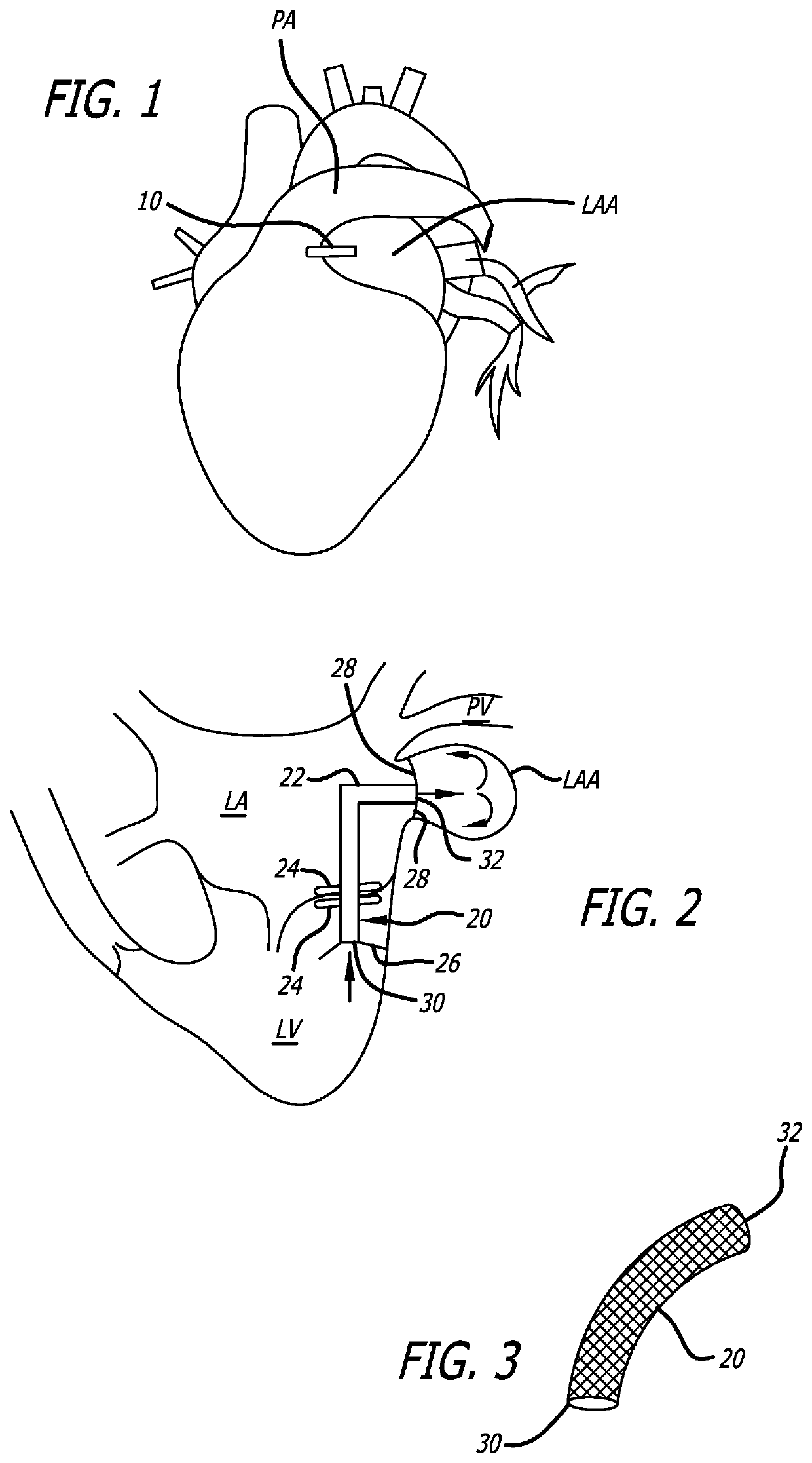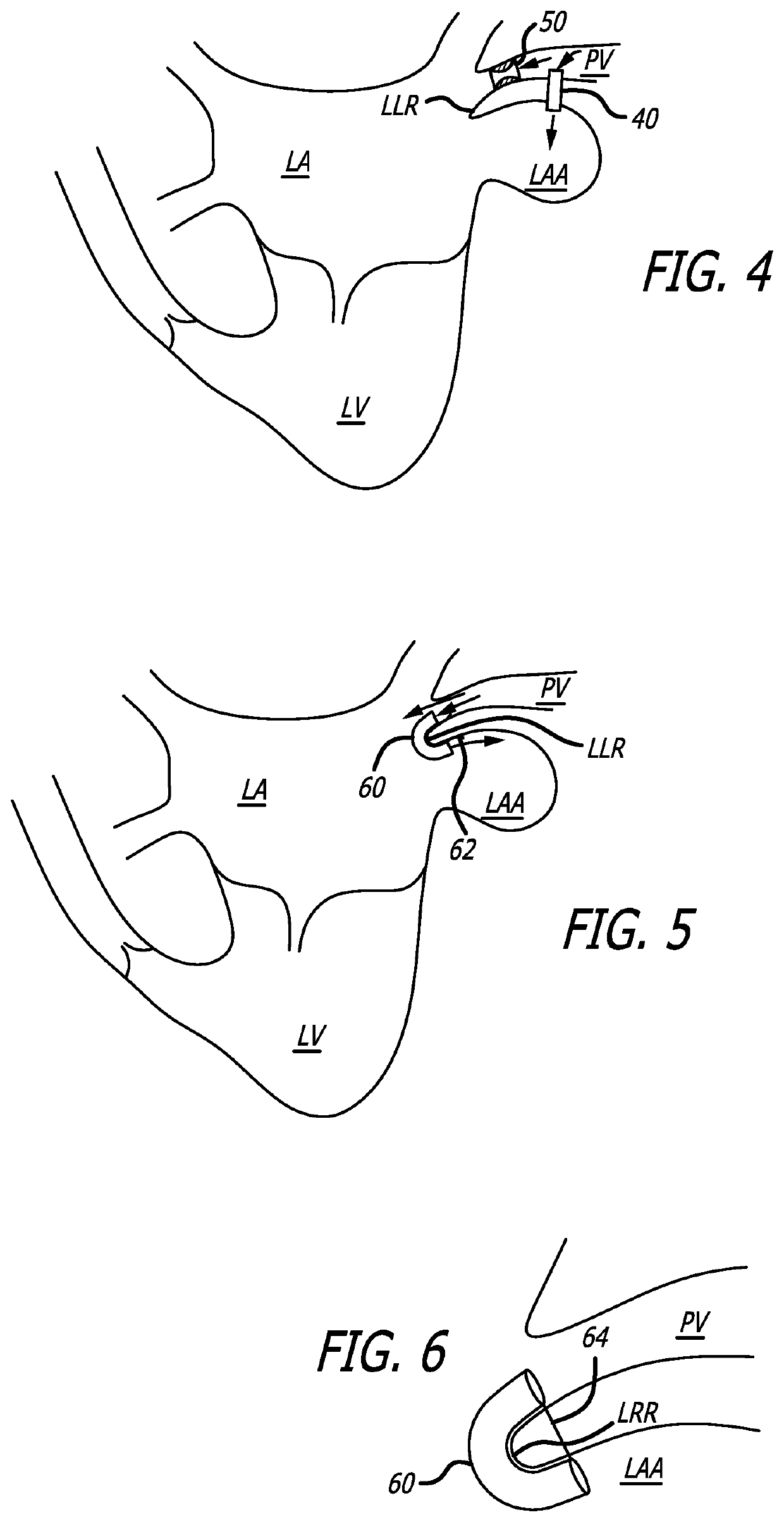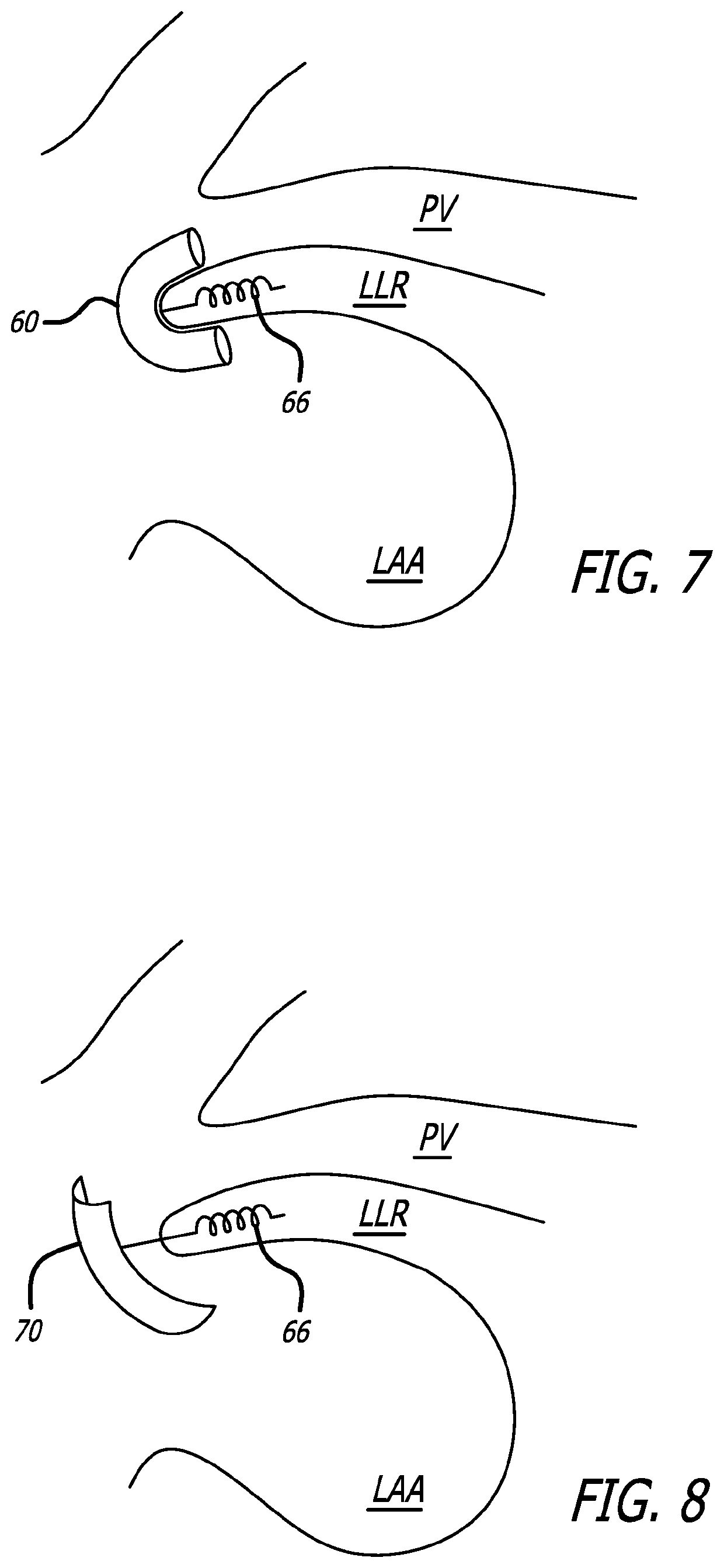Left atrial appendage stasis reduction
a technology for reducing the stasis of the left atrial appendage, which is applied in the direction of prosthesis, surgical staples, blood vessels, etc., can solve the problems of increasing the risk of rupture and pericardial effusion, increasing the risk of infection, and so as to reduce increase the flow through the laa , the effect of reducing the size of the shun
- Summary
- Abstract
- Description
- Claims
- Application Information
AI Technical Summary
Benefits of technology
Problems solved by technology
Method used
Image
Examples
Embodiment Construction
[0059]Specific embodiments of the invention will now be described with reference to the accompanying drawings. This invention may, however, be embodied in many different forms and should not be construed as limited to the embodiments set forth herein; rather, these embodiments are provided so that this disclosure will be thorough and complete, and will fully convey the scope of the invention to those skilled in the art. The terminology used in the detailed description of the embodiments illustrated in the accompanying drawings is not intended to be limiting of the invention. In the drawings, like numbers refer to like elements.
[0060]Increasing Blood Flow Through the LAA
[0061]Several embodiments of devices and methods for increasing the blood flow through the LAA are shown and described herein. Referring first to FIG. 1, there is shown an embodiment of a shunt 10 connecting the pulmonary artery PA to the LAA. The shunt may be used in combination with a filter, either internal or exte...
PUM
 Login to View More
Login to View More Abstract
Description
Claims
Application Information
 Login to View More
Login to View More - R&D
- Intellectual Property
- Life Sciences
- Materials
- Tech Scout
- Unparalleled Data Quality
- Higher Quality Content
- 60% Fewer Hallucinations
Browse by: Latest US Patents, China's latest patents, Technical Efficacy Thesaurus, Application Domain, Technology Topic, Popular Technical Reports.
© 2025 PatSnap. All rights reserved.Legal|Privacy policy|Modern Slavery Act Transparency Statement|Sitemap|About US| Contact US: help@patsnap.com



